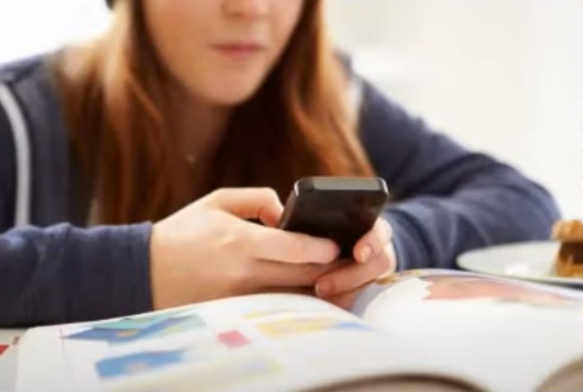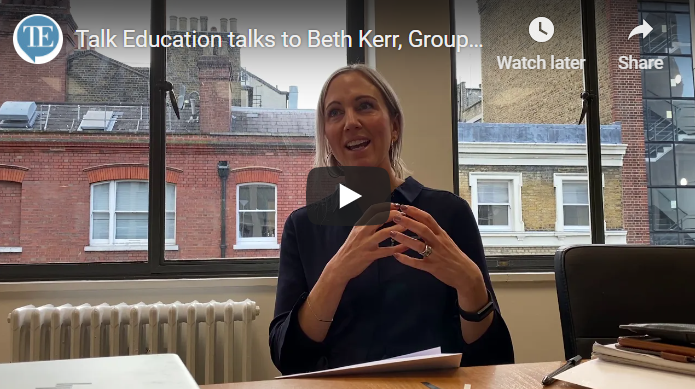

How We Can Respond To Hidden Pupil Mental Health Needs
It used to be the case that most pupils with challenging EBD needs were difficult to miss. Challenging needs almost always meant challenging behaviours. But not any more.
Find out below how your school can respond to the growing number of pupils who are hiding their mental health needs.
A GROWING TREND
The majority of your pupils facing challenging emotional needs today are currently hiding them from you. In school their behaviours are more often than not compliant, low profile, unassuming. The kind of behaviour one assumes means everything is fine and where your teachers miss the serious concerns behind the surface. And the pandemic has made this significantly worse and schools need help to respond.
How can I make this claim so definitively? The claim is based on evidence. Strong evidence in fact. Since 2015 my organisation, STEER Education, has been tracking pupils’ social-emotional development across Ys 3-13 across England. We now have six years of data, are the only organisation in the UK including the NHS, to have pre, during and post pandemic data and are currently tracking more than 70,000 pupils.
One of the measures we track is Self-Disclosure, a psychological term which refers to the willingness of a pupil to share, or make visible, aspects of themself to others – their thoughts, ideas, questions, opinions, feelings. Think of each pupil having a front and a backstage; some pupils hold what they are really thinking and feeling on their backstage – which you cannot see. What you see, is their frontstage….
THE RISE OF DEFLECTING AND MASKING
Since 2016 the data shows there has been a steady but year-on-year decline in adolescent pupils’ Self-Disclosure. One possible driver of this is the rise in social media use, an environment which punishes young people for disclosing anything which may be mocked. As a result, young people are more self- and socially-monitoring, focusing on how they must present themselves on their front stage to a watching and critical audience.
This masking on the front stage is backed up by the sharp differences we see amongst certain year groups. Year 6, for example, is a year when Self-Disclosure has, typically, risen against the trend; an optimistic sign of pupils feeling more secure and less self-conscious. Sadly, this moment is short lived; from Y7 onwards they descend, with nearly 6/10 girls in Y10 and Y11 masking their thoughts, feelings, needs and ideas from those at school- whether friends or teachers.
The pastoral and mental health implications of this low Self- Disclosure are serious. Think of the Y11 boy completing your (well designed) annual wellbeing survey; his responses are very likely to be designed to deflect from any indicators of need; he won’t tell you he is struggling with exam pressure. Or think of the Y9 girl meeting her tutor (who she likes) to discuss how she is finding school; her intention will be to avoid giving anything much away even if she is struggling with panic attacks, or her situation at home is very difficult, or she is being bullied online.The results are that young people are more isolated, struggling without getting the help they need.
Despite the dedication and skills of your staff, they will struggle to help their pupils if they cannot see or hear what is really going on behind the stage curtain.
THE PANDEMIC HAS ACCELERATED HIDDEN RISKS
Sadly, as we reported in our January 2021 national tracking lockdown report, the pandemic has accelerated this worrying phenomenon. Before the pandemic 6/10 Y7-13 girls were low disclosing. That number has now risen to 8/10, and low disclosing boys have also increased over 20%. This is an extraordinary number. It reflects that young people have responded to the pandemic by becoming more self-contained and autonomous. Their relationships and social interactions have been severely curtailed. As a result the ways they have to share and externalise their feelings and thoughts have drastically declined. At the same time, parents and teachers have been preoccupied and much less available. The result is a generation of young people turning inwards.
COPING THROUGH INTERNALISED CONTROL
Most concerningly, 40% of these girls are now managing their anxiety through a psychological pattern we describe as internalised control. Internalising control is a psychological mechanism for coping when the world seems both unsafe and unavailable. It involves regulating our thoughts and feelings internally without expressing them. It takes tremendous psychological resources; generally it involves a high degree of rumination, chewing over how to cope, late into the night, sleeping badly. It often leads to sustained high cortisol levels, relating to a sustained state of stress. It involves reacting to moments of deep anxiety or panic, sometimes through controlling a substitute – a substance or a self-soothing activity. It involves pushing down the give-away signs, leaving a growing gap between how people see us coping, and how we are actually coping. It leaves us vulnerable to breaking at some point in the future.
Looking beyond those who raise their voice You may feel that your schools have open cultures in which pupils are more than able to voice their concerns and reach out for help, e.g. around issues of LBGTQI or the Everyone’s Welcome website. BUT we also know that there ARE a vocal minority of pupils who are highly Self-Disclosing; these are the ones whose voices you hear campaigning, or writing on web sites. But this small minority does not reflect the hidden majority. It is important not to generalise this behaviour to all pupils, or to become absorbed responding to these and overlook those who are silent.
VEIL: 4 STEP GUIDANCE FOR SCHOOLS TO RESPOND TO HIDDEN RISKS EARLIER
We have developed a four step guidance plan for schools to help them respond to this hidden pandemic under the acronym VEIL. VEIL reminds us that the major problems facing our pupils will be hidden from us unless we find ways to hear their hidden voice.
VALIDATE losses and focus resources
Pupils may be anxious about what they have lost through the pandemic. Validate those feelings but explain how you will be putting support in place. Y6 pupils appear to be feeling more anxious about transition to secondary school having had so little of Y6. Y10 and Y12 pupils appear to be anxious about how much of the curriculum has been lost. Don’t simply focus on exam years.
EQUIP tutors and anticipate concerns
Don’t mistake quietness or compliance for no concern. Remind pupils they can contact tutors through email or confidential note. Train tutors to notice when their tutees’ mood, routine, or attitude changes. Using open questions or reflective comments can help pupils open up e.g. “How are you finding things at the moment? Looks like your friendship group has changed a bit this term….”
INVITE Y11 and Y13 to contribute post-exams
There is strong evidence that pupils’ social-emotional risks have increased sharply when schools have been closed. Consider how you can extend the school provision for Y11 and Y13 after their exams rather than letting them drift through long unaccompanied summer months. One opportunity is to invite them to train as your peer resource for Stage 4 LISTEN. Listening skills will be valuable to you, to their peers and indeed themselves and are already highly valued by employers.
LISTEN: Build peer listening into your school structure
Peer listeners maybe be more effective channels for pupils to share their concerns than to an adult. Consider how to make such structures more available throughout the school, in tutor times, breaks or after school. Consider how to build in wider peer listening training into the school from September: these needs are likely to be dominant for the next 18 months.
HERE TO HELP…
STEER Education has helped hundreds of schools to respond to this hidden pandemic through our tools. STEER’s tools were developed out of 10 years of research, with more than 70,000 participants, resulting in a platform which is now used in 14 countries, by leading independent and state schools.



